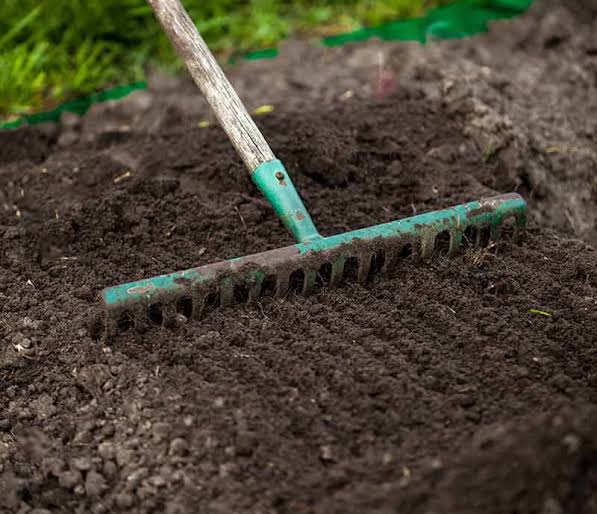A Complete, Beginner-Friendly GuideIf you’re looking for the best way to plant grass seed lawn at home, you’re in the right place. Whether you want to fill bare patches, refresh a tired yard, or grow a completely new lawn, planting grass seed is one of the most affordable and effective ways to achieve a lush, green outdoor space.This detailed guide breaks down everything—from choosing the right grass seed to preparing your soil, watering properly, and maintaining your lawn long-term. Perfect for homeowners in the United States, Canada, and the United Kingdom, where climate choices vary but the process stays beautifully simple.🌱 IntroductionPlanting grass seed might seem intimidating, but with the right steps, anyone can grow a healthy, vibrant lawn. The best way to plant grass seed lawn at home starts with proper preparation, the right seed choice for your climate, and consistent aftercare. That’s true whether you’re growing cool-season grass in Ontario, warm-season varieties in the southern U.S., or versatile grass mixes in the U.K.Let’s break it all down step-by-step so you can grow a lawn you’ll be proud of.🌾 1. Choose the Right Grass SeedChoosing the right seed is the foundation of success. Climate matters more than anything.Cool-Season GrassesIdeal for: Northern U.S., Canada, U.K.Kentucky BluegrassPerennial RyegrassTall FescueThese grasses grow best in cooler temperatures (60–75°F / 15–24°C).Warm-Season GrassesIdeal for: Southern U.S. regionsBermudaZoysiaSt. Augustine (usually grown from sod)CentipedeThese grasses thrive in heat (75–95°F / 24–35°C).Seed MixesMany homeowners benefit from blended mixes that improve disease resistance and year-round color.🌿 2. Prepare the Soil ProperlyThis step is more important than the seed itself. Healthy soil = healthy lawn.Remove DebrisClear:old grassrocksweedsbranchesLoosen the TopsoilUse a rake or garden tiller to loosen the top 2–3 inches of soil.Why? Seed roots grow more easily in soft, oxygen-rich soil.Improve the SoilYou may add:Compost for nutrientsTopsoil for levelingLawn soil for better water retentionThis is key to the best way to plant grass seed lawn at home because poor soil stops seeds from sprouting.🌦️ 3. Level and Rake SmoothlyLeveling prevents water pooling, which drowns seeds.Use a rake to create an even, smooth surface.🌾 4. Spread the Grass Seed EvenlyBroadcast by Hand or SpreaderA seed spreader ensures even coverage and prevents patchy growth.Recommended AmountMost grass seeds require:4–6 lbs per 1,000 sq ft (varies by type)Check the seed package for exact amounts.Lightly Rake Over the SeedRake gently so the seed is covered by ⅛–¼ inch of soil.Too deep → won’t grow.On the surface → dries out.🌱 5. Add a Thin Layer of Topsoil or Straw (Optional but Recommended)A protective layer helps:hold moistureprotect seed from birdsregulate temperatureUse:peat mossthin straw layer (not hay)light compost💦 6. Water Correctly (Most Important Step!)The best way to plant grass seed lawn at home always involves proper watering.✔ Before GerminationWater lightly 2–3 times a day to keep soil consistently moist—not soaked.✔ After GerminationOnce sprouts reach 1 inch:Reduce to once per dayDeep water so moisture reaches roots✔ After 3–4 WeeksWater 2–3 times per week deeply.Grass seed fails most often due to inconsistent moisture.☀️ 7. Provide Ideal ConditionsTemperatureCool-season: 50–75°F (10–24°C)Warm-season: 70–90°F (21–32°C)SunlightMost grass needs 4–6 hours of direct sunlight daily.Avoid Foot TrafficDo not walk on seeded areas for 3–4 weeks.✂️ 8. First MowMoist soil + tiny grass = damage risk.Wait until grass reaches 3–4 inches tall.Then:Set mower to high settingEnsure the blade is sharpNever cut more than 1/3 of the grass height🌱 9. Fertilize (After 4–6 Weeks)Use a starter fertilizer after the grass establishes.Avoid fertilizing too soon—young seedlings can burn easily.⚠️ 10. Common Mistakes to Avoid❌ Overwatering and creating muddy soil❌ Burying seeds too deep❌ Using old or poor-quality seed❌ Ignoring soil preparation❌ Mowing too early❌ Planting at the wrong temperature🔧 Practical Tips for Success✔ Keep seed moist for 21 daysConsistency = germination.✔ Use a sprinkler timerHelps maintain regular watering.✔ Test your soilIdeal pH: 6.0–7.0✔ Overseed yearlyKeeps lawn thick and weed-free.✔ Avoid using weed killerDo NOT apply weed killer for 6–8 weeks after seeding.🌼 ConclusionLearning the best way to plant grass seed lawn at home is all about preparation, patience, and proper watering. When you choose the right seed, create healthy soil, and take care of your new grass as it grows, you’ll be rewarded with a thick, green, beautiful lawn that boosts curb appeal and makes outdoor living enjoyable.Whether you’re reseeding bare patches or growing a brand-new yard, following these steps will set you up for success in any climate across the U.S., Canada, or the U.K.

